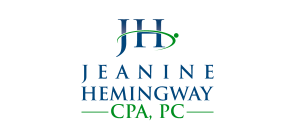9 Moves to Maximize Your Tax Deductions
Tax Planning for Tax Savings
How to lower taxes is one of the most common financial planning questions tax advisors receive among individuals and business owners. Armed with the right knowledge and guidance, there are plenty of ways you can save money on taxes— you just need to know where to look. This list provides a detailed overview of ways to help reduce your tax bill.
Know your bracket:
The IRS has seven income tax brackets and which one you fall into depends on your level of income. First determine your tax bracket, then break down your income into the prescribed income types that you earn. Knowing your tax bracket can help you assess the tax impact before you make any financial decisions.
Leverage tax deductions:
The deductions you qualify for can make a significant difference on your tax refund. Here’s a short list of some deductions to take advantage of:
State sales tax – Using the IRS’s calculator, you can determine how much of your state and local sales taxes you can deduct.
Reinvested dividends –When you automatically have dividends from mutual funds reinvested, include that in your cost basis. This way, when you sell shares, you might reduce your taxable capital gain.
Charitable contributions – You can deduct donations you make to qualified charities. This can reduce your taxable income, but to claim the donations, you have to itemize your deductions. Claim your charitable donations on Form 1040, Schedule A.
Student loan interest – The student loan interest deduction lets you deduct up to $2,500 from your taxable income if you paid interest on student loans this year.
Child and dependent care – Up to $6,000 of qualifying expenses can be used for the Child and Dependent Care Tax Credit.
Earned Income Tax Credit, or EITC – In 2020, a married couple with three children and adjusted gross income of $56,844 or less could receive up to $6,660.
Medical and dental expenses- You may be able to deduct the costs of medical and dental care for you and your family using the Medical and Dental Expenses deduction. This deduction lets you deduct the amount of your total medical and dental expenses that exceed 7.5% of your adjusted gross income.
Watch the Calendar:
If you can time things right, you may be able to improve your chances of getting a larger refund. Assess any payments or contributions you can make before the end of the year that will reduce your taxable income. Some examples:
- If you can, make January’s mortgage payment before December 31 and get the added interest for your mortgage interest deductions.
- Schedule health-related treatments and exams in the last quarter of the year to boost your medical expense deduction potential.
- If you’re self-employed, look at any purchases you’ll need to make that can qualify for deductions. Buy things like office equipment and software before the end of the year to help boost your refund.
Utilize your home-office space:
As many Americans are working from home due to the pandemic, it’s important to keep track of all your expense. The IRS created the Simplified Business Use of Home (Form 8892), which is a deduction designed for self-employed individuals that work from home (or a remote agent style employee). It allows the self-employed a deduction using up to 300 sq.ft. of their home at an automatic $5 per sq. ft., which takes the place of all other expenses.
Use the best filing status:
Has anything changed in your filing status this year? Married, children, or divorced? Your relationship status on December 31 determines your filing status for the entire year and is the one you need to use when filing that year’s tax return. Options include:
- Single
- Head of household
- Married, filing jointly
- Married, filing separately
- Qualifying widower
Use your Flex Spending Account:
An FSA is an account, offered by many employers, that allows you to contribute money on a pretax basis to be used for certain expenses related to health or dependent care. The money that goes into your FSA is deducted from your income on a pretax basis, so it lowers the amount of income on which you are taxed. Be sure to use funds in your account before year end.
Make contributions to retirement accounts:
Saving for retirement can qualify you for several different types of tax breaks. Some retirement accounts allow you to defer paying income tax on your retirement savings, while others help you avoid paying tax on any of the investment gains you accrue. Contributions include:
Company sponsored 401(k) plans: Experts recommend contributing either the full amount allowed, annually ($19,500 for 2020 or $26,000 for taxpayers 50 and over), or – at least – the maximum amount that will be matched by your employer.
Traditional IRAs are usually pre-tax contributions, meaning your contributions are placed in your IRA before being taxed, lowering your taxable income for the current tax year. You won’t pay taxes on your contributions until you withdrawal the money.
Roth IRAs are taxed upfront. So, although these contributions don’t lower your tax bill in the present, the distributions you take when you retire, including earnings, are tax-free.
Setup a college savings fund for your children:
Not only do 529 plans provide federal tax-free growth and tax-free withdrawals for qualified expenses, but many states offer residents a full or partial tax credit or deduction for contributions to their state’s plan, and some states allow you to deduct contributions to any plan. Such funds can now be used for kindergarten through 12th-grade tuition at private schools—up to $10,000 per child per year.
Maximize your business expenses:
Usually, business owners and self-employed taxpayers are able to use a additional tax reduction strategies because of tax deductible business expenses. The lower your net profit, the lower your self-employment tax will be, so keeping track of as many expenses as possible can help reduce your tax bill. Some common business tax deductions include, office rent, home offices expenses, the cost of acquiring and maintaining a vehicle for the business, and inventory.
While everyone’s tax situation is different, there are certain steps and tax-saving vehicles you can take advantage of to lower your taxable income. Discussing your particular situation with a CPA and business accountant can provide tax advisory strategies you can take advantage of today.
For more tips contact your Austin tax planning and tax advisors at Jeanine Hemingway, CPA.





